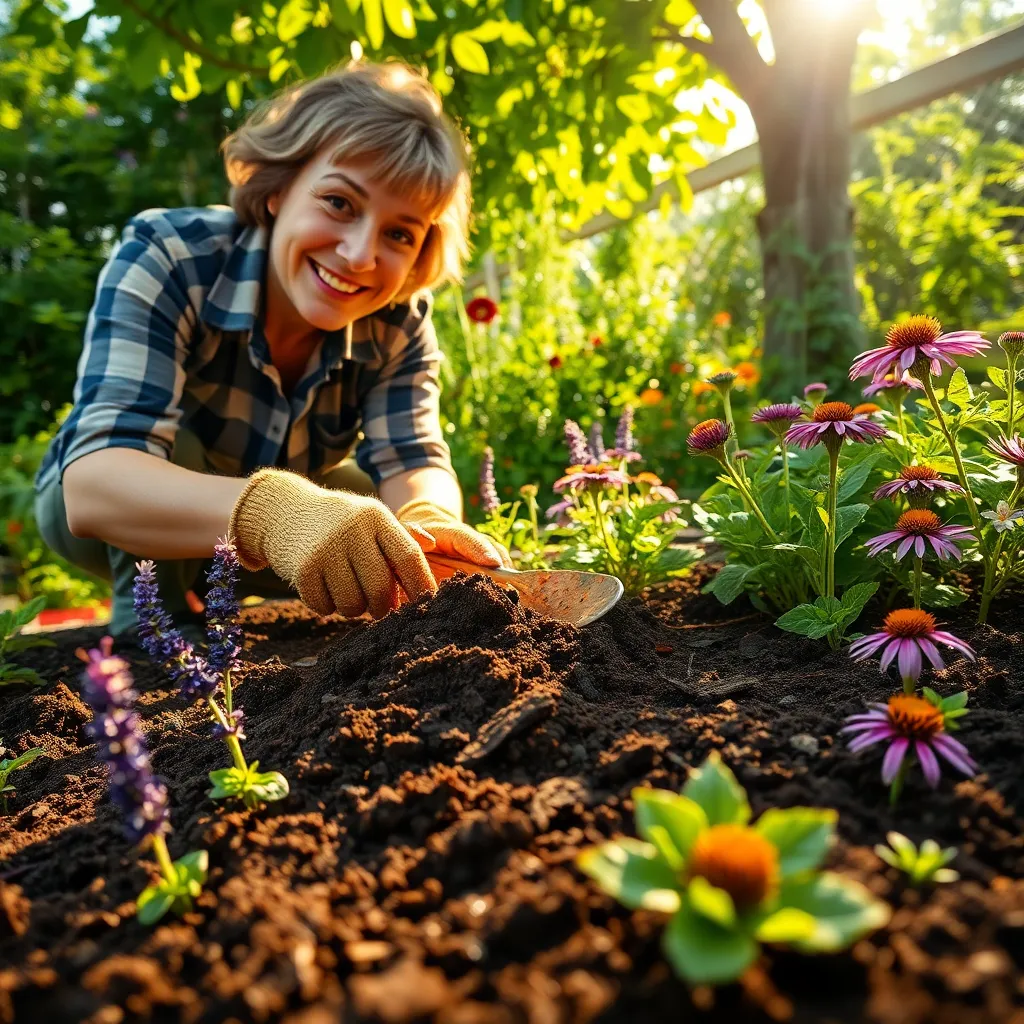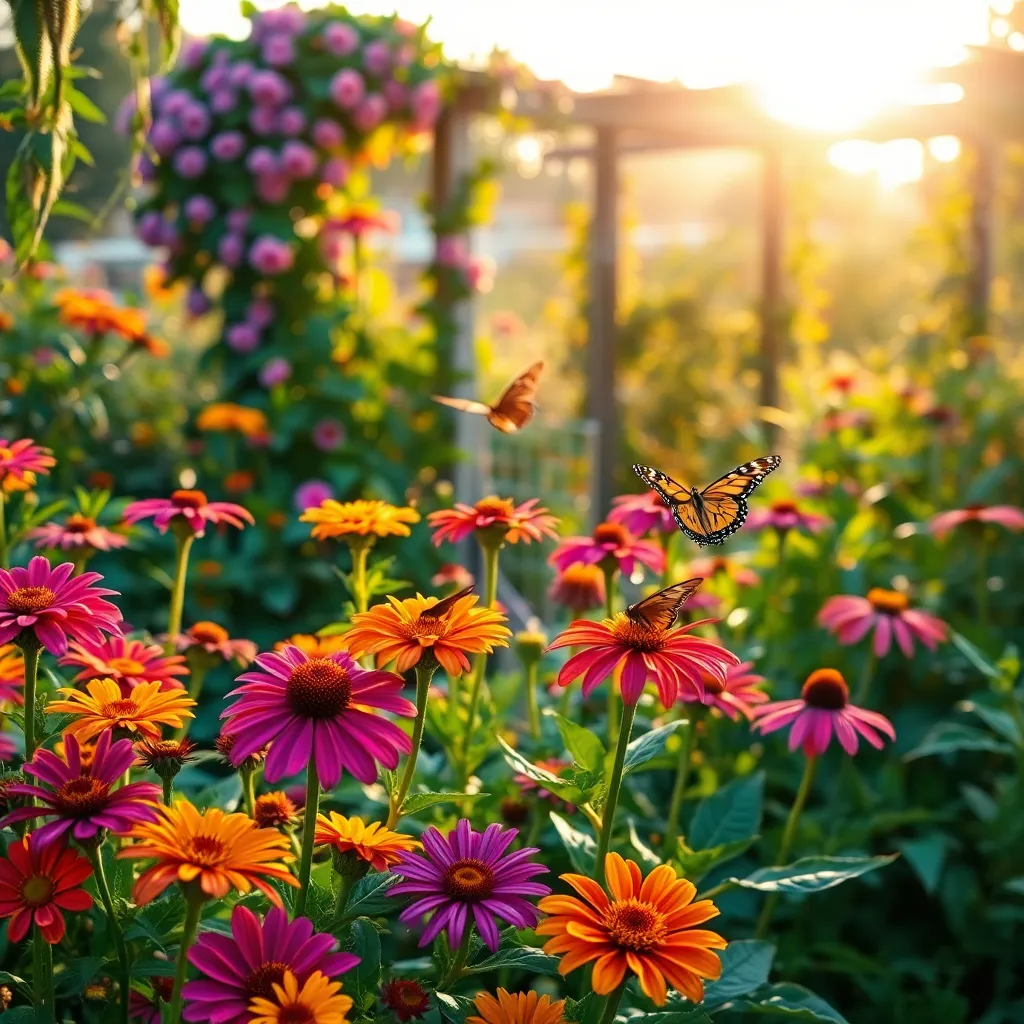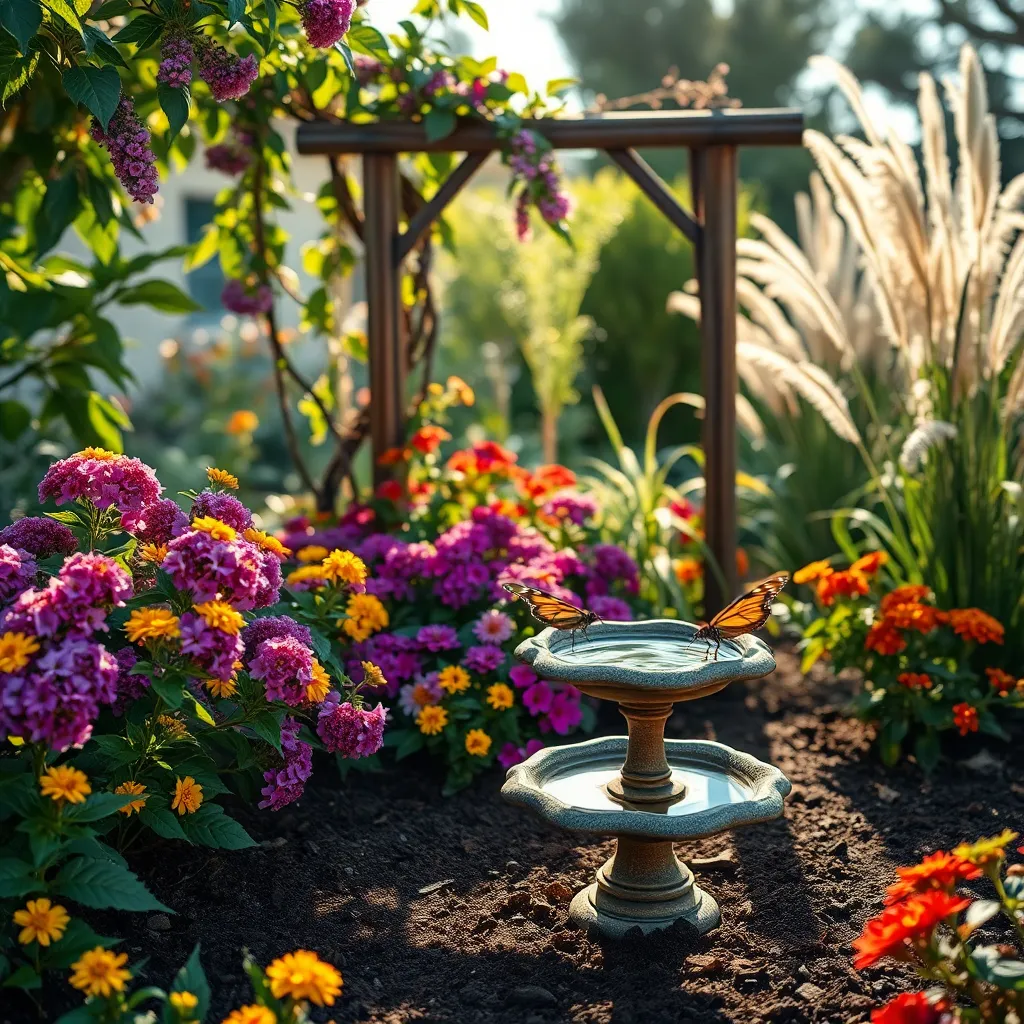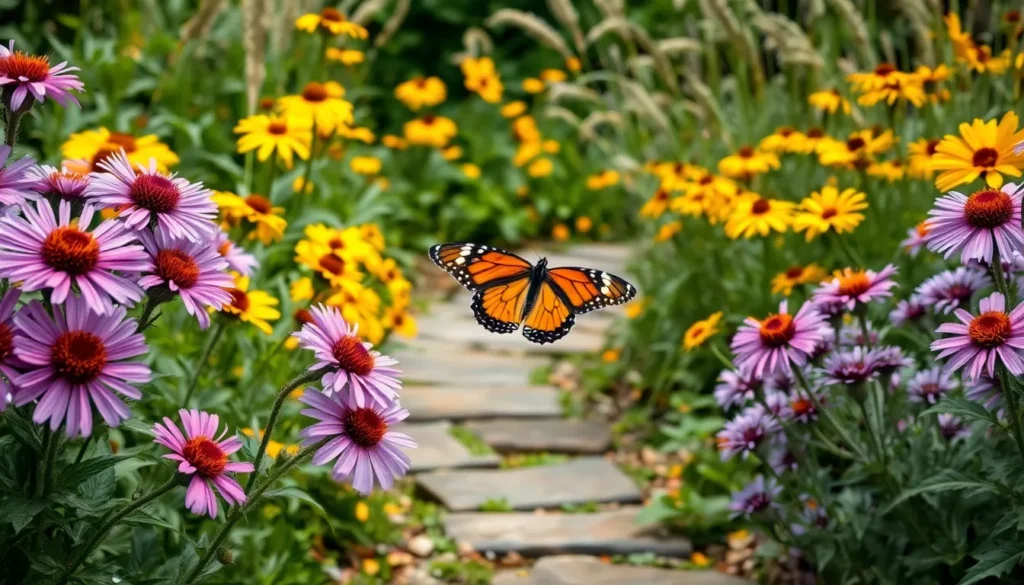Imagine stepping into your garden and being greeted by a kaleidoscope of butterflies, their vibrant wings fluttering gently in the breeze. Creating a butterfly garden is not only a beautiful addition to your outdoor space but also an essential step in supporting these delicate pollinators whose habitats are increasingly under threat. Whether you’re just planting your first seeds or have tended to your garden for years, establishing a haven for butterflies is a rewarding endeavor that connects you to nature in a meaningful way.
In this article, we will guide you through the fundamentals of designing a butterfly-friendly garden, tailored to both novice and veteran green thumbs. You’ll discover how to choose the right plants, provide essential resources like water and shelter, and maintain an environment where butterflies can thrive. By the end, you’ll be equipped with the knowledge to transform any garden into a vibrant sanctuary for these enchanting creatures. Let’s embark on this journey together, nurturing not only our gardens but also the ecosystems that make our world a little more magical.
Select a Sunny Location

When creating a butterfly garden, it’s crucial to select a location that receives plenty of sunlight throughout the day. Most butterfly-attracting plants require at least six hours of direct sunlight to thrive, making a sunny spot an ideal choice.
Ensure the chosen area is not shaded by buildings or large trees, as this may impede the necessary sunlight exposure. Consider the sun’s path throughout the day to ensure consistent lighting, especially in the morning when plants benefit from gentle rays.
Besides sunlight, the soil in this area should be well-draining to prevent root rot, which can affect plant health. You can improve drainage by incorporating organic matter such as compost or aged manure into the soil.
For those with advanced gardening skills, consider creating a slight slope in the garden bed to further enhance drainage and sun exposure. This can be done by elevating one end of the garden, ensuring water runs off effectively while maximizing sunlight capture.
Choose Butterfly-Friendly Plants

Butterflies are naturally drawn to gardens that offer a variety of colorful blooms. Choose plants with nectar-rich flowers such as coneflowers and zinnias to attract these beautiful pollinators.
When planning your butterfly garden, consider planting in clusters. Grouping plants of the same species together makes it easier for butterflies to spot them from a distance.
For a successful butterfly garden, incorporate a mix of perennials and annuals. This ensures a continuous supply of nectar throughout the growing season, which keeps butterflies visiting your garden.
In addition to flowers, include host plants for caterpillars. Milkweed, for example, is essential for monarchs, providing both food and habitat for their larvae.
Ensure your soil is well-draining and enriched with organic matter to support healthy plant growth. A balanced, slow-release fertilizer can be applied in spring to give plants a nutritional boost as they grow.
Water your butterfly-friendly plants deeply but infrequently to encourage strong root development. Use mulch to retain moisture and suppress weeds, creating a more inviting environment for butterflies.
Advanced gardeners might experiment with planting native species to support local butterfly populations. Native plants are typically more resilient and require less maintenance once established, benefiting both you and the butterflies.
Prepare and Enrich the Soil

To ensure your butterfly garden thrives, start by preparing and enriching the soil. Begin by removing any weeds or debris, as these can compete with your butterfly-friendly plants for nutrients.
Next, assess the soil texture by squeezing a handful of it. If it crumbles easily, you have sandy soil, while a sticky texture indicates clay, and loam will feel like a mixture of both.
Improve soil structure by incorporating organic matter such as compost or well-rotted manure. Doing so not only enhances the soil’s nutrient content but also improves drainage, making it ideal for most plants.
For those with clay soil, consider adding gypsum to break up the compact structure, improving aeration. Conversely, sandy soils benefit from additional organic matter to increase water retention and nutrient availability.
Amend the soil with a balanced fertilizer to provide necessary nutrients, especially in nutrient-poor areas. A slow-release formula is preferred, ensuring continuous nourishment over time.
Test the soil pH to ensure it remains within the optimal range of 6.0 to 7.0 for most butterfly-attracting plants. Use a soil pH test kit for accuracy, and adjust accordingly with lime to raise pH or sulfur to lower it if needed.
By taking these steps, you’re not only preparing a fertile ground for your plants but also creating an inviting habitat for butterflies. Remember, healthy soil leads to robust plants, which ultimately support a thriving butterfly ecosystem.
Plant Nectar and Host Plants

To create a thriving butterfly garden, it’s crucial to include both nectar and host plants. Nectar plants provide food for adult butterflies, while host plants are where they lay their eggs and caterpillars feed. For a balanced butterfly habitat, choose a variety of nectar plants that bloom at different times throughout the season. This ensures a continuous food source, supporting butterfly populations all year round.
Popular nectar plants include lavender, zinnias, and coneflowers, which are known for attracting a wide range of butterflies. These plants generally prefer well-drained soil and full sun, requiring about an inch of water weekly, either from rain or supplemental irrigation. Host plants, such as milkweed for monarchs or dill for swallowtails, are equally vital. Ensure these are placed in areas where they can thrive, typically needing similar sun exposure but varying soil conditions depending on the species.
When planning your butterfly garden, consider planting in clusters to make it easier for butterflies to find and feed on the flowers. This approach mimics natural environments and can significantly increase the number of visitors to your garden. Advanced gardeners might consider incorporating native plant species, which tend to be more resilient and better suited to support local butterfly populations.
Keep your butterfly garden pesticide-free to protect these delicate pollinators from harm. Instead, focus on natural pest control methods, like introducing beneficial insects such as ladybugs. With a thoughtful selection of nectar and host plants, your garden can become a vibrant sanctuary, attracting butterflies and supporting their lifecycle from egg to adult. Remember, creating a butterfly-friendly space takes time and observation, so be patient and enjoy the process of watching your garden and its inhabitants flourish.
Install Water Sources and Shelter

Butterflies need a reliable water source, so consider adding a shallow water feature to your garden. A simple birdbath or a shallow dish with stones can provide a safe drinking spot for butterflies without risking drowning.
Ensure the water is clean by refreshing it regularly to prevent algae buildup and mosquito breeding. It’s also beneficial to create a “mud puddle” area by mixing soil and water, which supplies minerals that butterflies seek out.
In addition to water, butterflies need shelter from the wind and predators. Planting shrubs or installing a butterfly house can offer refuge, providing a comfortable resting spot during inclement weather.
Strategically place your shelter options near nectar and host plants to create an inviting and cohesive environment. This setup will encourage butterflies to linger longer in your garden, enhancing both their habitat and your enjoyment of their presence.
Conclusion: Growing Success with These Plants
In cultivating a flourishing butterfly garden, we’ve explored five key relationship concepts that transform spaces and hearts alike. First, we learned the importance of understanding each other’s ‘soil’—the foundational needs that nourish relationships. Next, we emphasized ‘planting diverse flowers’ or embracing unique qualities that enrich our bonds. Providing ‘nurturing sunlight’ reminds us of the warmth and encouragement essential for growth. We also discussed ‘weeding out pests’, a metaphor for resolving conflicts gracefully. Finally, ‘watering regularly’ highlighted the necessity of consistent care and communication.
As an immediate step, consider dedicating time this week to identify and nurture one specific ‘flower’—a unique trait or shared interest in your relationship that deserves more attention. This simple action can reinvigorate and deepen your connection.
Remember, nurturing relationships is an ongoing journey. Bookmark this article to easily revisit these concepts and reinforce your relationship toolkit. As you continue to cultivate your garden of relationships, know that each effort you make is a seed planted for future success and joy. With dedication and love, your relationships will bloom beautifully, offering endless rewards.







